BADMAN FREAK; MAXWELL BOGLE
America’s most wanted: armed, dangerous and living in London
Where did New York’s hardest Yardie gangsters run to when police wrecked their empires? The UK’s criminal underworld knows the answer…
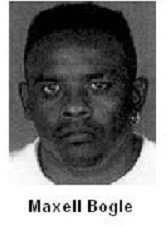
Tony Thompson
The Observer, Saturday 3 June 2000
One belongs to a gang of notorious mass murderers. Another rapes and sodomises the children of people who owe him money. A third has shot, stabbed and tortured his way to the top of the criminal underworld. These, the world’s most violent Yardie gangsters, are believed to be hiding in London.
Charles Brackett, Mervin Benjamin and Maxwell Bogel are all fugitives from the FBI and are said to have made several visits to the UK as part of their bid to evade capture. The trio are native Jamaicans, but until recently were based in New York.
Bogel made his name as an enforcer with a vicious gang known as the Shower Posse – because they showered victims with bullets from Uzi sub-machineguns. Since 1996 his role has been to collect debts from those who owe the gang for drugs.
To do this, he broke into their homes, kidnapped their children and brutalised them repeatedly until the gang was paid. His victims were often tied up for 30 hours at a time. One, a 12-year-old girl, also endured rape and sodomy.
Last year Bogel, who has a string of previous convictions, was tried and convicted in absentia of attempted murder, kidnapping, rape, sodomy, robbery and possession of firearms. He received a sentence of 68 years.
Now the man described by US marshals as ‘armed, extremely dangerous and one of the most sought after criminals in the United States,’ is believed to be here. Sources in the London’s Yardie underworld say a man fitting Bogel’s description has been seen in London several times in the past year.
Deported from the US, Bogel is believed to have come to Britain in a bid to re-enter America indirectly.
Charles Brackett, Mervin Benjamin and Fabian O’Neal Littlejohn are also believed to be moving in and out of London on false papers. They are all key members of the Poison Clan, responsible for 30 murders and the sale of millions of pounds worth of crack, heroin and guns.
The gang’s name comes from a cult martial arts movie and refers to its members’ willingness to kill their own as well as others. Poison Clan was founded by Devon ‘Chubby’ Beckford after killing two crack-dealing colleagues who had refused to let him branch out on his own.
Under him, the Clan quickly grew, using violence to convince other dealers to buy from the Clan and share their profits. Those who resisted were dealt with ruthlessly.
When a group of cannabis dealers from suburban Richmond refused to capitulate, Chubby told one of his footsoldiers, Jimmy Fingers (he had accidentally shot one of his fingers off) to teach them a lesson. Four clan members set off for Sugar Bottom at 4.15 that afternoon.
When police arrived at the clansmen’s destination they found three bodies sprawled in the small and blood-spattered front room. Another wounded man had managed to crawl down a hallway towards the back door. The killers were nowhere to be found.
Following an extensive police and FBI operation, the gang was broken up in 1997 with 28 defendants – including Beckford, who narrowly avoided the death sentence – being brought before the courts and convicted on drugs and violence charges. Brackett, Benjamin and Littlejohn, however, are still on the run.
They are not the first wanted Yardies to make the trip across the Atlantic. Victor Francis, a leading member of the Brooklyn-based Renkers Posse, fled to Britain in the mid-Nineties after being indicted in New York on 16 charges, including murder, attempted murder, robbery, theft and drug dealing. He was eventually arrested when police found him running a crack den in Acton with his brother.
Earlier this year, 38-year-old Winston Harris, the leader of a Yardie gang called the Lock City Crew, was jailed for life for shooting dead a man at the Bridge Park leisure centre in Wembley. The shooting broke out after the wife of a member of the rival Cartel Crew drove into the centre’s car park to see an event.
One of the security guards who was also a member of the Lock City Crew criticised her poor parking and told her to try again. The woman then flew into a rage, smashed a bottle and had to be escorted away by police, but she returned 20 minutes later with her Cartel Crew husband.
Lock City members saw this move as a direct attack on their territory – Bridge park was a major crew meeting place – and a hideout for their caches of drugs, guns and ammunition.
Winston and three others retrieved guns they always kept hidden in a sports bag nearby, locked the door of the leisure centre to prevent anyone leaving during their planned raid and went to track down their rival. But in the panic that followed, Harris let off a shot which killed a bystander, Dion Holmes, passing through his heart and liver.
Harris, who had served several jail terms in New York and had fled here to avoid further charges, regularly travelled between the two countries on false passports.
He was convicted of murder along with three others. Ironically a Jamaican national, Anthony Wray, another member of the LCC present that day and who Scotland Yard plan to charge with Dion Holmes’s murder, is believed to be hiding abroad, probably New York.
One detective said last night: ‘These fugitives should on no account be approached by members of the public.’
FABIAN O’NEAL LITTLEJOHN Wanted for: multiple murders, assaults, robberies and threats Also known as: Jack, Fatta Date of birth: 1/2/1969 Known for: Violent obedience of gangster bosses’ orders STILL AT LARGE
MAXWELL BOGEL Wanted for: kidnapping, rape, robbery, sodomy of 12-year-old girl Also known as: Max Bogle, Paul Robinson, Ike Box Date of birth: 22/1/1963 Known for: Ruthless, brutal debt collecting for vicious Shower Posse ARMED AND HIGHLY DANGEROUS
MERVIN BENJAMIN Wanted for: Multiple murders, assaults, robberies, drug-trafficking Also known as: Benji Date of birth: 10/8/1965 Known for: Flitting back and forth across the Atlantic on false papers, gun-running activities WANTED FOR MULTIPLE MUDERS
CHARLES O. BRACKETT Wanted for: gang-warfare related murder, robbery and assault Also known as: Charlie Chase Date of birth: 28/8/1964 Known for: Being one of few members of the once powerful Poison Clan who is still at large. WANTED
Maxwell Bogle, 38, was indicted in the 1996 kidnap and rape of a 15 year old girl, in which he and co-defendant, Eric Ellis, held her prisoner for nine hours, sexually assaulted, pistol-whipped and threatened to kill her in front of two other children, ages 14 and 15. Bogle jumped bail before his trial and is suspected of committing a fatal shooting and four gunpoint home invasions while on the lam. He was captured yesterday at his Brooklyn hideout. He surrendered without resistance.
(New York)
Submitted on: 03/02/01
TOO LATE SUGAH
JOKE OF THE DAY:
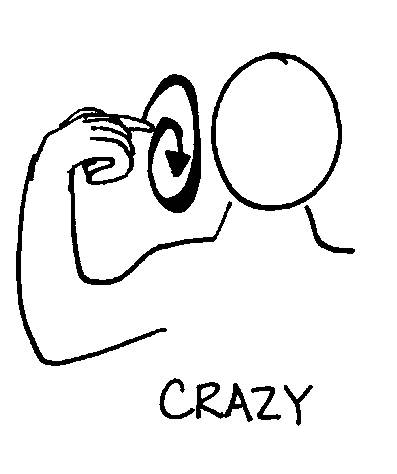
I SWEAR MAD PEOPLE BE UP IN AND THROUGHOUT MY EMAILBOX…I RECEIVED THIS YESTERDAY:-
Hi met you have this big 45 year old woman Wey love party hard and gwaan like she young! Well met d tuff turbit wenever she tek picha she always have couple vein stan up inna har forehead. D woman yie big so till, mi feel all wen she ah 80 she ago still be able fi c cause she have the bulbie yie!!!!
NEW PAN MANZANA BLOCK
MET CHRISTINE MEET APPLE ON FACEBOOK AND LOOK UP TO HER SO BAD . . .THIS GIRL REALLY WANTS TO BE LIKE APPLE.
I OVERHEARD HER SAYING SHE LOVE HOW APPLE DRESS AND SHE LOVE ALL HER HAIRSTYLES THEM . LONG STORY SHORT THEY
EXCHANGE NUMBERS ON FACEBOOK IN JANUARY AND STARTED HANGING OUT. JADION PAID FOR CHRISTINE TO GO TO MIAMI WITH THEM IN APRIL
SHE STAYED IN THERE HOTEL IN THE SAME ROOM . . .SHE AND APPLE START GO ON THE ROAD AND THEIF AND SHE STOP WALK WITH HER UGLY FREN CRYSAN THE GIRL WITH THE HUGE LIPS. SHE ONLY WALK WITH APPLE KERRYANN AND HER SISTER BARBIE NOW. SHE SAY APPLE AND HER IS THE SAME SO THAT’S HER BESTIE NOW . I DON’T KNOW WHY CHRISTINE IS WALKING WID APPLE SHE IS A PRETTY GIRL BUT WORSHIP VANITY LIKE HER ROLE MODEL APPLE. . AND JADION INTRODUCE CHRISTINE TO ONE HIS FRIEND NAME BLACKS SO SHE TALKING TO BLACKS ON THE LOW KNOW BECAUSE HE HAS ALOT OF CASH AND SHE STILL WITH HER BABYFATHER STONE LOVE.
SANDOKHAN
Sandokhan cut down by cronies
BY KARYL WALKER Sunday Observer staff reporter [email protected]
Sunday, January 06, 2008
This series of articles is not intended to lionise or glorify the acts of criminals but to put a historical perspective on criminality in Jamaica, with the hope of shedding light on why the country is now teetering on the edge of lawlessness. Of significant note, as well, is the fact that the subjects of these stories die violently and very young.
DURING the decade of the 1980s when the economy was rocked by crippling austerity measures, and structural adjustment policies had hit the impoverished areas of Jamaica, a new breed of criminality evolved.
Communities in the lower section of St Andrew such as Waterhouse, Olympic Gardens, Tower Hill and Riverton City were all shelters for vicious hoodlums. Life was unbearable for law-abiding citizens who had no choice but to live under the lawless rule of armed gangs and political thugs, who laid waste to those areas by filling the void left by a poorly equipped and hapless police force. Many times these gangs would kill, rape and terrorise residents with impunity.
The actions of the police at the time, which included batterings and wholesale arrests, further compounded their fight against crime and alienated them from the communities that were under the gun.
Out of this quagmire rose one of the nation’s most notorious gangsters. His name was Wayne Smith, known more popularly as ‘Sandokhan’.
At the time of Sandokhan’s short-term life of crime, residents of the area claimed they were in- between the rock of police brutality and the hard place of plunder by the armed gangs, which ran amok in their communities.
“We couldn’t take how the badman dem was a gwaan. Dem rape the woman dem and rob poor people – not to mention the whole heap a people them kill. But the police sometimes not better, as when them pass through them nuh care who them kick up and bruk batten pan. Them kill hole heap a innocent youths and plant gun pan dem to,” one woman who lived in Waterhouse said.
According to these residents, Sandokhan’s emergence could not have come too soon.
“Him bring order to the area and run whey the man dem who was going on with the wrongs. Him and him gang set the law because him never careless with him power, and treat old people and children with kindness,” the woman said.
But while other notorious bad men had shown a penchant for brutality from a tender age, those who knew Sandokhan say while he was a known ganja dealer, he was not one to murder and steal.
“Him start out selling weed and get crucial when a certain policeman try take over the weed business. Them try arrest him one day, but him escape and them lock up him woman,” one resident said.
Sandhokan was reportedly riding a motorcycle, with his wife as a pillion passenger when police officers signalled him to stop. Smith managed to wriggle out of the policemen’s grasp and managed to escape, but the cops reportedly arrested the woman.
The incident happened on November 19, 1986.
Residents say Sandokhan’s foray into murder and blood-letting had its genesis in that narrow escape with the law. Reports began to surface in the community that Mrs Smith, who was married to Sandhokan at the age of 15 in 1985, was being ‘boxed up’ by the police at the Olympic Gardens Police Station. The news infuriated the man, who would grow to become the nation’s most wanted fugitive and instilled in him a hatred for law enforcement.
The following night, Sandokhan and his gang undertook what has been the most brazen attack at law enforcement and society since independence from colonial rule.
The brazen gunmen stormed the porous, poorly staffed police station through the roof, and murdered three officers before stealing several weapons, including high-powered assault rifles, from the station armoury.
Another policeman reportedly escaped with his life after he lay on the ground and played possum.
The attack took place hours before dawn, and drew the condemnation of society and was dubbed a ‘guerilla style attack’ by local media.
The attackers had studied the habits of the cops at the station and knew that about that time the staff complement had dwindled and that those who were rostered to work were most likely asleep.
From that dreadful morning, the capture and castration of Sandokhan and his gang became priority number one for law enforcers.
Among those reported by police as being an accomplice of Smith was Nathaniel ‘Natty’ Morgan, who would take over the infamous title of most wanted after his former gang leader’s demise.
One week after the bare-faced invasion of the police station, the gangster, who managed to get past local Customs officials, was held aboard a departing flight at the Sangster International Airport. A popular artiste at the time had his passport seized and was barred from entering the United States and the United Kingdom after local police accused him of assisting the fugitive in his flight from justice. The ban was lifted several years later after the artiste’s work created a huge demand for his performances overseas.
Sandokhan was then dragged before the court after being charged with the triple murder of the cops. However, before he could be sentenced he managed to escape.
At the time, popular talk on the street was that he had powerful backers linked to the drug trade who had managed to corrupt prison warders and police officers, who had aided in his escape.
Sandokhan was recaptured and sentenced in the court to hang for his crimes. But on June 15, 1988, he managed to escape from the St Catherine District Prison (now called the St Catherine Adult Correctional Centre), and went back into the community of Waterhouse and its environs where he was shielded by the residents who welcomed his presence in their midst.
The policeman who had beaten Sandokhan’s wife, was identified in a letter by the fugitive to Monsignor Richard Albert as ‘D C Colt’.
“Father, Tuesday the police curfew Waterhouse and held my wife, and the same D C Colt boxed up my wife and beat her up and I want some action to take against the policeman soon. If no action don’t take against that policeman he is going to go on to do the same. And father, I promise you I will never molest the police but if the police continue doing things to my wife they will get me doing things to them….if no action is taken against that policeman he is going to make things worse on other policeman,” the letter read in part.
The Catholic priest had met with the most wanted man a number of times as he reportedly tried to persuade the fugitive to turn himself in, and came under fire from various sections of society when he likened the most wanted fugitive to Robin Hood.
“I make no excuse for Sandokhan or for the crimes he has committed. I, in no way want to say to you that poverty gives any man any excuse to commit crime, but I do beg of you to try and understand that when the social conditions around you are so bad, when the health services come nowhere near the basic needs of the community and unemployment, political rivalries cause young men to search for other alternatives to support themselves. I want you to understand how a young man like Sandokhan could emerge,” Albert said, while giving the main address at a function held by the Kiwanis Club.
Albert’s disclosure that he had been trying to convince the fugitive to turn himself in, after meeting with him many times, drew the ire of the then national security minister, Errol Anderson, who condemned Albert and wondered if, “a man in Father Albert’s position could have met with, and known the whereabouts of, Sandokhan and not pass this information to the police.”
One columnist suggested that Albert should be ‘given a taste of the lock-up’.
But despite Albert’s revelation, the state was intent on bringing the feared criminal to justice, and placed a $50,000 bounty on his head. The police were also busy using their brutal tactics to wrest information out of the residents of the communities where Sandokhan was known to use as his stomping ground. Residents reported that elderly persons, women and children were taken into custody and threatened, while the Sunday Gleaner reported that women and children were ‘prime targets’ of the police and soldiers who patrolled the community.
Two months after his flight from prison, the police had accused Sandokhan of committing nine murders including the shooting death of a teenager whom he described as an informer.
But despite the state’s efforts to nab or snuff out the life of the most wanted hoodlum, it was fellow gunmen who managed to end Sandokhan’s life just one year and 10 months after he had orchestrated the attack on the police.
During the early afternoon of September 8, 1988, in the neighbouring community of Tower Hill, the fugitive was ambushed by several gunmen and shot repeatedly. He died on the spot. It was hot on the lips of the residents of the area that Sandokhan was causing the security forces to apply too much pressure on the community and was killed so the police could relax the pressure.
The police, relieved that the man who had caused them many headaches had been extinguished, scraped up his remains and publicly displayed the fugitive’s body.
Soon after Sandokhan’s death, the police pressure on Waterhouse was not so intense, residents say.
Some of the contents of this article was researched from the book, Demeaned But Empowered, the social power of the urban poor in Jamaica: By Obika Grey.
Read more: http://www.jamaicaobserver.com/news/131065_Sandokhan-cut-down-by-cronies#ixzz1yxutgswB
THE REGGAE PHENOMENON
http://youtu.be/pCecw8cCXVA
In ‘Sunday A Come’, the late dub poet Mikey Smith alludes to a new consciousness: ‘but a like how yuh scratch dem drum/fi know yuh name an whe yub come from/for dat note is a long note/too long fi I sing it straight.’ The drum and identity, the stress and syntax – all bound in coherent meaning, something that Kwame Dawes might call the reggae aesthetic. Knowing that grammar is a kind of morality helps explain a lot about language, from how it develops to how it shapes perception and makes meaning out of experience. Nation language (i.e., the vernacular) challenges the old orthodoxy of language. The movement of Rastafari lingua into the Jamaican mainstream and beyond in the last generation is part of a sea change in the long project of decolonizing Jamaica, invoking a set of ideas about identity, history and language itself.
And in a broader sense, if we want to know Jamaica’s post-colonial life, argues Dawes in his remarkable new book, we need to understand how reggae gives voice to an ethos. ‘Reggae is a cultural phenomenon that is rooted in a spiritual and ideological context which has shaped not simply the way singers sing or musicians make music but in the way in which people talk, the way artists paint, the way Jamaica sees the world, and the way the world sees Jamaica and Jamaicans.’ Dawes’ new book will appeal to anyone for whom these subjects are matters of interest.
This volume of literary, musical and cultural commentary is part of a continuum of Dawes’ conception of something he terms the reggae aesthetic. He writes that an understanding of Caribbean writing of the last 30 years needs to be fortified by knowing what reggae is and how it functions. The reggae aesthetic comes out of ‘a working class art [that] asserted itself in its own terms and through a language and discourse that would in time shape the way an entire society defined itself and its artistic sensibilities.’ From its beginnings, reggae music registered the changing political and social consciousness of its time. Jamaican literature lagged behind, says Dawes, because it resisted speaking nation language and felt uncomfortable about Africa. While Jamaica has a tradition of literary nationalism, it was usually marked by European standards and conventions.
Why is it important? As my teacher Walter Ong has said, the more words you know, the more ideas you can have. Or, as critic Robert Benson notes, coming to terms with social change means coming with terms that adequately express it. That means expanding the field of discourse beyond the establishment’s. By widening the vocabulary lyrically and musically, reggae opened vistas of expression in social shape-shifting ways.
Dawes is an ideal grammarian for the reggae aesthetic, his voice the estuary where his energies as a poet, professor and one-time musician are poured. He bears a gift, rarer than it should be in academia, for intellectually processing his subject and still yielding enlivening writing: ‘For me, a vershan break, a shift to solely drum and bass, is a thing of beauty – it moves me. In the same way, the vacuum left behind by the withdrawal of the drum and bass, leaving the high-ended dance of guitar and keyboard, represents a moment of strange anticipation that affects my whole body. And when the drum and bass enter into that space that has been throbbing with possibility, I am forced to move, to turn, to react. I call this sheer beauty. I call the lyrical grace of Marley, his brilliance as a poet and visionary, a thing of beauty. I find…’ many things, occasionally in an effulgent chant, always in a disciplined and empathetic form.
Like Ralph Waldo Emerson in 19th century America, Dawes has a group of ‘representative men’ whose lives speak to history and human nature in Jamaica and who helped define the reggae aesthetic.
Don Drummond typifies ‘jazz and the reggae poetic archetype,’ at once defining himself as an artist on his own iconoclastic terms and as a representative of the values or the working class and the Rastafari. These influences contributed to the development of a distinctly Jamaican art form – ska.
Dawes’ commentary on Burning Spear, an archetypal ‘prophet,’ is fascinating. His point of departure is Spear’s cover of the Grateful Dead’s ‘Estimated Prophet,’ which comes initially as a surprise. Those of us who find the reggae/Dead crossovers better marketing than music may want to rethink things in this instance. Dawes locates the virtues of the reggae aesthetic in the song’s post-colonial sense and its artistic self-containedness. Burning Spear completely reconstructed ‘Estimated Prophet,’ singing it in nation language, making it pulse with a juggernaut reggae beat and adding traces of his signature ‘Marcus Garvey’ horn line. The song was then stamped with a fresh imprimatur, one that signified Spear’s prophet of black identity, Marcus Garvey. ‘And it is by this brilliant and respectful transformation of an American rock anthem into a totally Third World and Jamaican construction, that we see again the distinction and distinctiveness of the reggae aesthetic.’
Another surprising choice – Lee Perry’s From the Secret Laboratory (1990) – becomes a chapter centre-piece. Improvisatory, experimental, destabilizing in art and life is Lee Perry, who represents the Jamaican psyche just as he does a madman-artist figure favored by (mostly white) reggae fans outside Jamaica.
Again and again, Bob Marley emerges as the transcendentalist, defining the local moment with the power of Biblical verity. ‘Burning and Looting,’ for example, is elevated from ‘a cry for actual violent insurrection and social defiance … to an act of intellectual and spiritual guerilla activity’ whereby the line ‘Burning all illusion tonight/Burning all pollution tonight’ signifies ‘A cosmic expiation of the sins of the oppressor and enactment of the “fire next time”.’
Natural Mysticism is a wide text not because Dawes is comprehensive – he readily admits how much remains to be done with the reggae aesthetic with respect to specific reggae artists and to other Jamaican music and art – but because he allows for a multi-vocal treatment of his subject in the course of his deep meditations. Blending rigorous analysis with autobiography and poetry, his anatomy of reggae culture stands as a groundbreaking work quite nearly resembling a manifesto.
****RULES**** 1. Debates and rebuttals are allowed but disrespectful curse-outs will prompt immediate BAN 2. Children are never to be discussed in a negative way 3. Personal information eg. workplace, status, home address are never to be posted in comments. 4. All are welcome but please exercise discretion when posting your comments , do not say anything about someone you wouldnt like to be said about you. 5. Do not deliberately LIE on someone here or send in any information based on your own personal vendetta. 6. If your picture was taken from a prio site eg. fimiyaad etc and posted on JMG, you cannot request its removal. 7. If you dont like this forum, please do not whine and wear us out, do yourself the favor of closing the screen- Thanks! . To send in a story send your email to :- [email protected]
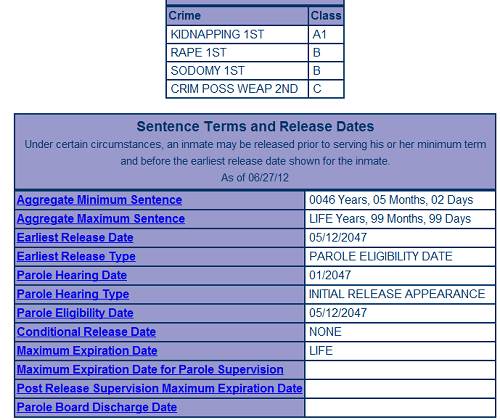
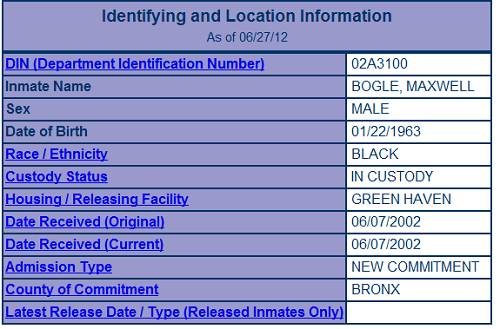

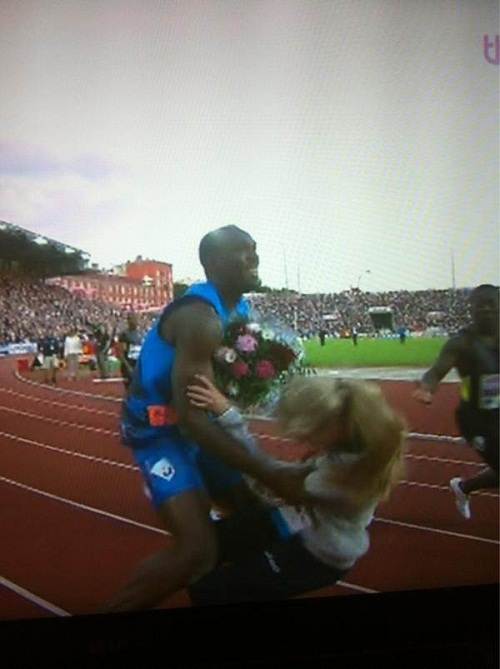

Recent Comments